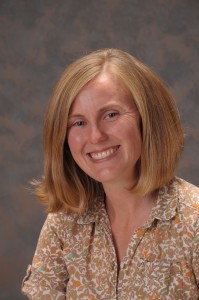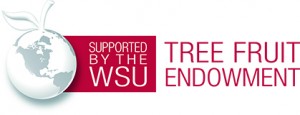Written by Tianna DuPont, WSU Extension. Updated Jan 10, 2025.
Fire blight cankers left in the orchard are the source for new spring infections. Remove cankers to reduce your fire blight pressure.
Where does Fire Blight come from?
Erwinia amylovora, the fire blight pathogen overwinters in cankers in the orchard. Cells of the Erwinia pathogen survive primarily in the canker margins where diseased bark tissue meets healthy bark tissue. Frequently, in many of these cankers, the pathogen dies out over the winter, but in 20 to 50% of cankers, active cells of the pathogen survive until the next bloom period. In a recent study Santander et al (2022) found that between 7 and 62% of cankers initiated in June were positive for fire blight bacteria the following April.
In spring, during periods of high humidity, the pathogen oozes out of the canker margins. This ooze is attractive to insects (e.g., flies) as a food who can then move the disease to the flowers. Wind blown rain also moves the pathogen around.
What do Fire Blight cankers look like?
Cankers are areas of dead tissue. There are other types of cankers but fire blight cankers are reasonably easy to identify. They are greyish, lavenderish and sometimes almost black. The tissue may be somewhat sunken and cracked. Cankers are sometimes associated with shoots that were killed last year. In the tissue of young shoots the blight moved quickly through the tissue and down to a larger stem.
Figure 1. Fire blight cankers.
Remove infected cuttings from the block
It is best to cut the cankers separately from when the tree is pruned and shaped for structure, and remove the blighted cuttings from the orchard as they can be a source of pathogen cells in spring. For example, in 2019 when eighteen 1-5 cm fire blight cuttings were left in the orchard from Feb 28 to April 17, 28% still had living fire blight bacteria when tested in the spring.

Where to cut
Compared to cuts made in summer, winter removal cuts can be made closer to the visible canker edge because the pathogen is confined to the cankered area. Cut at the next “horticulturally sensible” site below the canker. You do not need to sterilize tools when you are cutting on fully dormant trees. The pathogen is not moving through the tree in the winter. Focus your efforts in blocks where you had fire blight last year. Check all of your blocks to reduce your risk this year.

Contact
WSU Extension Specialist, Tree Fruit
tianna.dupont@wsu.edu
(509) 293-8758
(509) 713-5346 cell
Additional information
Fire Blight Website https://treefruit.wsu.edu/crop-protection/disease-management/fire-blight/ Tianna DuPont, Tim Smith. Washington State University. See updated efficacy reports at the bottom of the page.
Fruit Matters articles may only be republished with prior author permission © Washington State University. Republished articles with permission must include: “Originally published by Washington State Tree Fruit Extension Fruit Matters at treefruit.wsu.edu” along with author(s) name, and a link to the original article.













